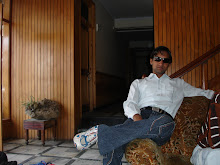The LHC's purpose is "fundamental research"
NEW DELHI: When the 27-km long Large Hadron Collider (LHC), a particle accelerator, goes live on Wednesday in the Alps along the Swiss-French border, it will kick off one of the largest man-made experiments in history.
Interestingly, it’s not just a massive science experiment being conducted by CERN, a French acronym for the European Organisation for Nuclear Research, but also one of the biggest IT projects.
India's contribution to the $10-billion effort in search of the universe’s missing matter by smashing particles like during the Big Bang is equally impressive. Around 200 of the 2,000 scientists doing the experiment are from India.
The entire system comprising 1,232 cryo magnets, each weighing about 32 tonne, is sitting on precision motion positioning systems developed, among other places, at the Raja Ramanna Centre for Advanced Technology (RRCAT), Indore, by the Electronics Corporation of India.
Indian institutes like Tata Institute of Fundamental Research (TIFR), Mumbai, Bhabha Atomic Research Centre, Trombay, Saha Institute of Nuclear Physics, Kolkata, RRCAT, Indore, Benares Hindu University and varsities of Delhi, Jaipur, Punjab have contributed significantly to the experiment and will also be involved in analysing the collision debris.Says Amit Roy, director of Delhi-based Inter-University Accelerator Centre (earlier called Nuclear Science Centre): “About 200 scientists involved in the experiment are of Indian origin. “
“India has also been involved in supplying material to build the tunnel and several Indians have played a key role in the whole project,” Mr Royadded.
The monetary contribution by India is $25 million. The prominent Indians who are part of the project include Atul Gurtu of TIFR, an expert on particle colliders, Vikas Sinha of the Saha Institute of Nuclear Physics, Kolkata, who created a chip to process signals, and Vinod Chauhan employed by CERN to lead the group which tested the magnets.
Raja Ramanna Centre for Advanced Technology director Vinod Chandra Sahni says: “No collisions will take place today. September 10 simply marks the launch wherein two beams will be sent in the tunnel, one clockwise and the other anti-clockwise.
The particle smashing at close to speed of light (about 300,000 km per second) will start on October 21. Some particles will collide, triggering new particles that could help scientists understand the universe better.”
The tunnel, buried 100 metres underground, is lined with sensors and 1,600 superconducting magnets across eight sectors, which are held at an operating temperature of 271 degrees below zero — colder than outer space. The LHC accelerator, which is accurate to a nanosecond, will be used to slam particles into each other to try to recreate the conditions at the beginning of time — as in the Big Bang.
Data from the collision, about 15 petabytes (1 petabyte is quadrillion bytes or 1,000 terabytes) a year will be studied around the world by some 100,000 computers across 50 countries. Within a year, the particle accelerator’s experiments will have spewed enough data to fill a pile of compact discs 12 miles high. India is part of the world-wide computational grid that will help analyse this data.
But the massive experiment is not without its share of controversy. Cynics believe that all the particle smashing will create a massive black hole, sucking life out of earth, if things don’t follow the planned script. However, Mr Roy adds: “The scientific community the world over is eagerly looking at the experiment. The claims of this experiment turning out to be a disaster are rather exaggerated and based on wrong calculations.”
Brusing aside fears of the experiment going wrong, geeks at CERN believe that they are going to find the so-called God-like particle dubbed Higgs Boson, which will offer clues about dark matter and other missing links of physics.
This, in turn, will accelerate our own understanding of life. If they don’t find that, they still hope to lay their hands on something exciting and worthwhile out of the tunnel. Much like one of CERN’s alumni, Tim Berners-Lee, stumbled upon the internet and invented the first web browser in 1989 to initially help physicists worldwide to swap notes!







No comments:
Post a Comment